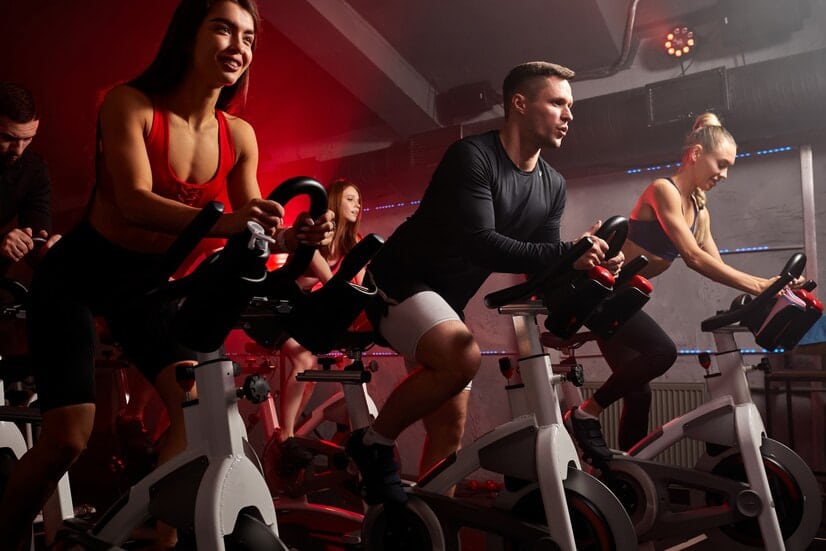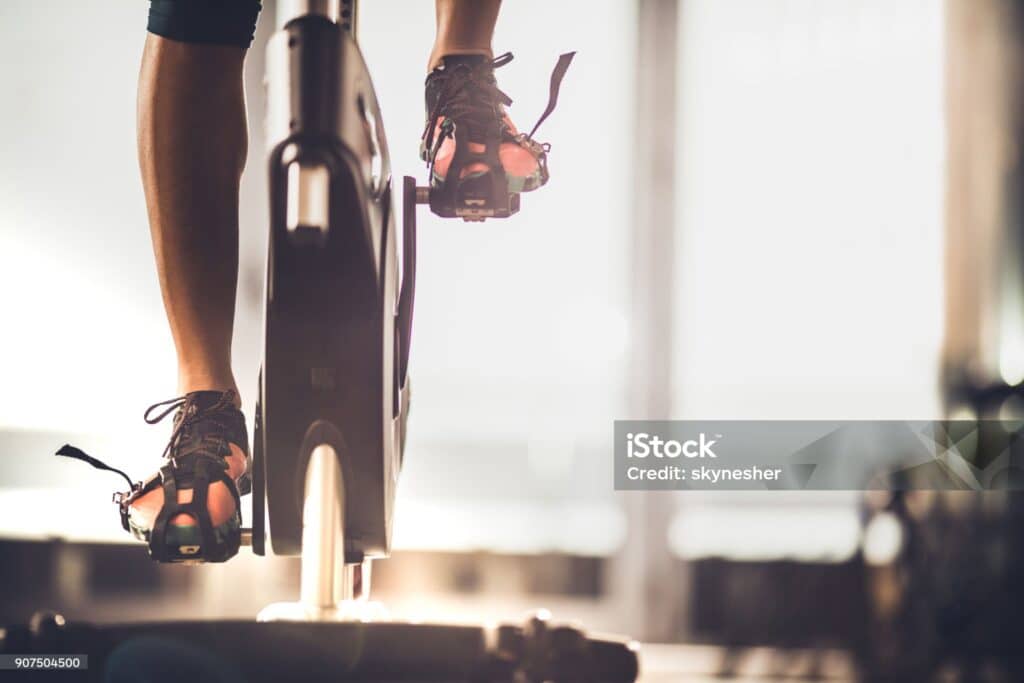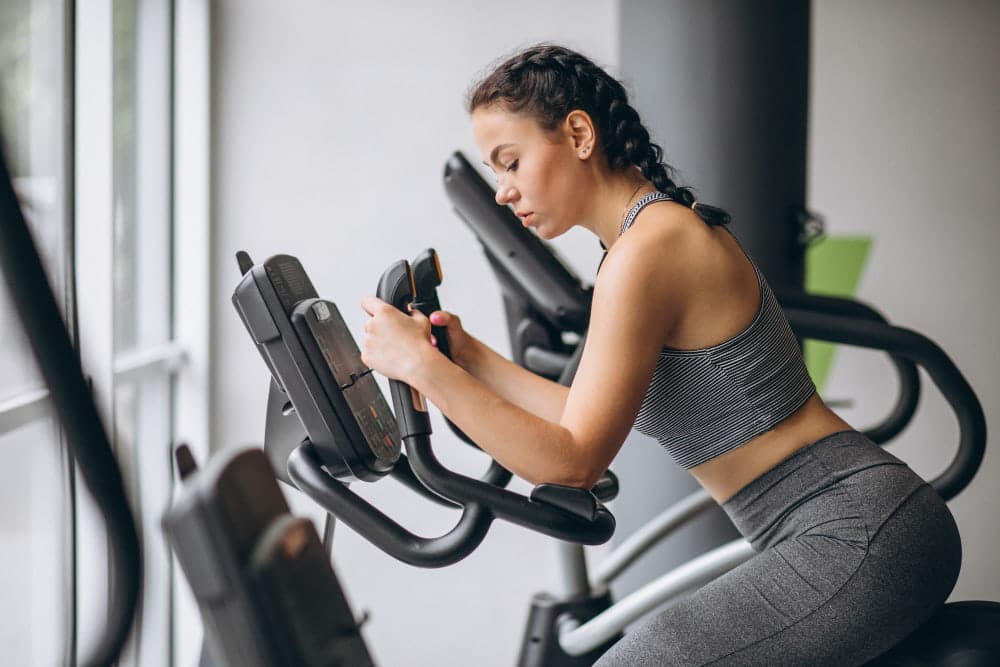
Summary
Welcome » Welcome » Tips for getting started » What muscles does the exercise bike work?
What muscles does the exercise bike work?
Are you looking to find out which muscles the exercise bike works? This article is made for you. The indoor bike is a complete fitness tool that uses several muscle groups.
Summary
Introduction
The legs, glutes, core and even arms and shoulders are involved. Knowing these muscles helps you optimize your sessions and maximize results.
The exercise bike has become a must-have in the world of fitness. Whether it's to get fit, lose weight or simply relieve stress, this equipment is perfect for an at-home workout. But did you know that pedaling an exercise bike uses a large number of muscles? Knowing these muscles and understanding their role is essential to optimize your sessions and maximize results.
When you use an exercise bike, each pedal stroke works various muscle groups. By being aware of the muscles involved, you can adjust your posture and training techniques to get the most out of each session. In this article, we will explore in detail the main muscles used by the exercise bike, as well as the benefits of this activity on your body. You'll also discover tips to optimize your training and achieve your fitness goals faster.
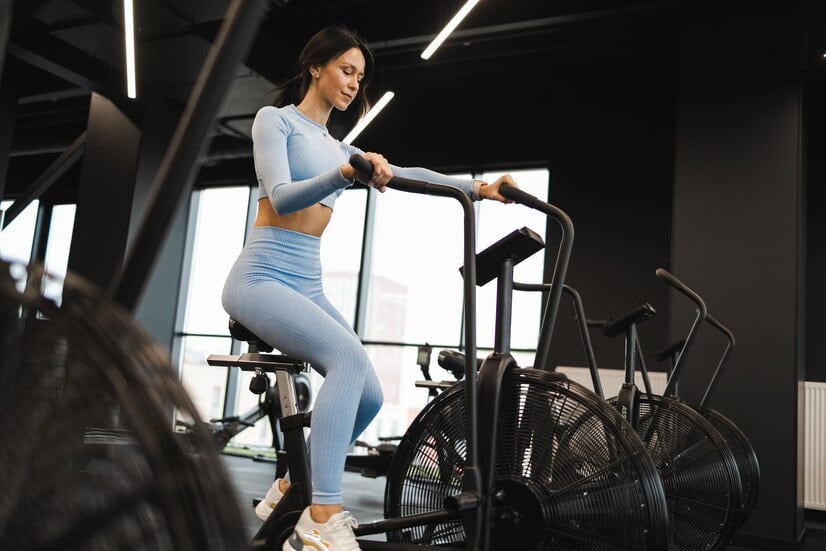
The Main Muscles Used by the Exercise Bike
The exercise bike is a complete physical activity that works several muscle groups. Each pedaling motion engages different parts of the body, making it a great exercise for strengthening and toning your muscles. Here is a detailed view of the main muscles used by the exercise bike.
Leg Muscles
The legs are the first beneficiaries of a session on an exercise bike.
Quadriceps : Located at the front of the thigh, the quadriceps are mainly used during the pushing phase. Each time you press the pedal, these muscles contract to propel the movement.
Hamstrings : Located at the back of the thigh, the hamstrings work during the traction phase. When you bring the pedal back up, these muscles contract to complete the pedaling cycle.
Calves : The calf muscles help stabilize and propel the pedaling motion. They play a crucial role in transmitting force from the thighs to the pedals.
The Gluteal Muscles
The glutes are not left out during an exercise bike session.
gluteus maximus : This is the main muscle of the buttocks, activated when pushing down. A strong gluteus maximus contributes to better pedaling power.
Middle and small gluteus : These muscles help stabilize the pelvis. They play a key role in maintaining correct posture and avoiding injuries.
Trunk Muscles
A strong core is essential for an effective exercise bike session.
Abdominals : The abs help maintain correct posture and stabilize the body. They are particularly stressed when you lean slightly forward.
Back muscles : The lumbar muscles, located in the lower back, support the spine. They help keep your back straight and prevent lower back pain.
Arm and Shoulder Muscles
Although the exercise bike is primarily a lower body exercise, the upper body muscles are also worked.
Biceps and triceps : These arm muscles are used to hold the handlebars and stabilize the upper body. They play a crucial role in overall balance during exercise.
Shoulders : The shoulder muscles are used to maintain a straight and balanced posture. Proper shoulder position helps prevent tension and pain.
The Benefits of the Exercise Bike on Muscles
Not only is the exercise bike a great way to burn calories, but it also offers many benefits for the muscles. By cycling regularly, you can strengthen, tone and improve the endurance of your muscles. Here's how.
Improved Muscle Strength
The exercise bike is a resistance exercise that helps strengthen muscles. Each pedal stroke requires force, which stimulates muscle growth. By gradually increasing the resistance of your bike, you can target specific muscles and increase their strength. The quadriceps, hamstrings, and calves are particularly stressed, which leads to harmonious muscular development.
Muscular endurance
Muscular endurance is the ability of your muscles to work for long periods of time without tiring. The exercise bike is ideal for improving this endurance. By maintaining a steady pace for long periods of time, your muscles learn to use energy more efficiently. This is particularly beneficial for the leg and gluteal muscles, which must constantly work during the session.
Toning and Definition
The exercise bike also contributes to muscle toning and definition. By burning calories and reducing body fat, muscles become more visible and well defined. Repetition of pedaling movements helps sculpt muscles, especially those in the legs and glutes. Additionally, by engaging your core muscles to maintain correct posture, you can also tone your abs and back muscles.
In conclusion, the exercise bike is a versatile tool that offers considerable benefits for your muscles. Whether to strengthen, improve endurance or tone, each session brings you one step closer to your fitness goals.
How to Optimize Your Exercise Bike Training
To get the most out of your exercise bike sessions, it is essential to optimize your training. Here are some tips to maximize your results and achieve your goals faster.
Vary the Intensities
Interval training is an effective method for improving both muscular strength and endurance. By alternating periods of intense effort with periods of recovery, you can increase your heart rate and stimulate different muscle groups. For example, pedal at a high resistance for 30 seconds, then recover at a lower resistance for a minute. Repeat this cycle for a complete and dynamic workout.
Adjust Position
Correct posture is crucial to avoiding injury and maximizing the effectiveness of your workout. Make sure the saddle is at the correct height: your legs should be slightly bent when the pedals are at the lowest point. Keep your back straight and avoid slouching. By maintaining an ergonomic position, you will reduce stress on your joints and work your muscles, especially your core, more effectively.
Use Pre-established Programs
Modern exercise bikes often offer built-in workout programs that can help you vary your sessions and stay motivated. These programs are designed to target different goals, such as weight loss, improving endurance or building muscle. By following these programs, you benefit from a structured plan that can help you make consistent, measurable progress.
Optimizing your exercise bike training requires a combination of varied techniques, attention to posture and the use of the tools at your disposal. By following these tips, you will be able to maximize the benefits of your sessions and achieve your fitness goals in a more efficient and enjoyable way.
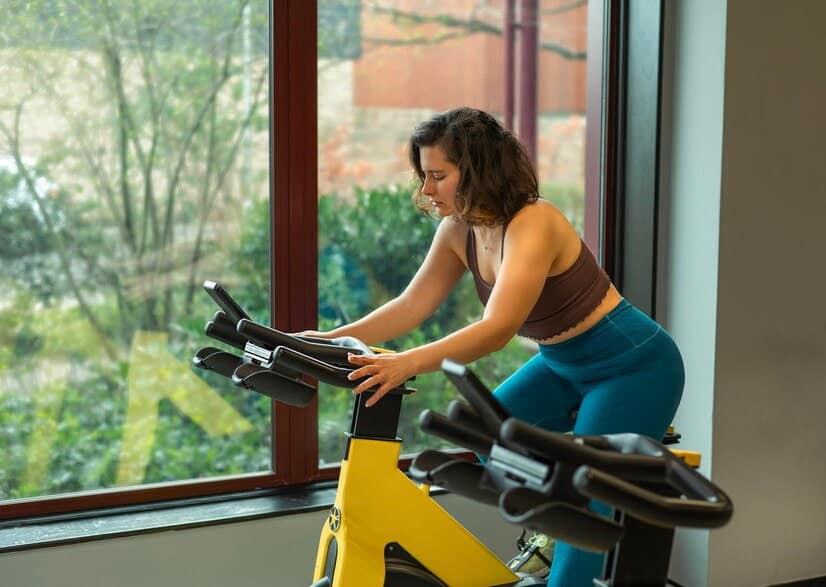
Conclusion
Riding an exercise bike helps strengthen and tone your muscles. It effectively works the legs, glutes, core, as well as the arms and shoulders. Optimizing your training helps maximize these benefits.
By varying the intensities and adjusting your position, you will avoid injuries and improve your performance. Using pre-planned programs helps you stay motivated and structured.
Build muscle at Space
Vous souhaitez profiter des bienfaits du vélo d’appartement en combinant vélo et musculation ? Chez SPACE CYCLE, notre cours POWER RIDE mélange cardio et renforcement musculaire pour un entraînement complet, ciblant les muscles du tronc.
Live a unique immersive experience with light shows and a dynamic atmosphere, led by our coaches and their exclusive playlists.
Join us in our Bonne Nouvelle or Bastille studios for unrivaled indoor cycling sessions!
Read also
RPM combien de fois par semaine : Guide pour optimiser vos séances
Vélo d’appartement bienfaits : pourquoi l’adopter dès maintenant ?
Follow us
on instagram
To follow all our news,
take advantage of our tutorials and participate
in our many contests.
Breaking news!
Receive our newsletter.
